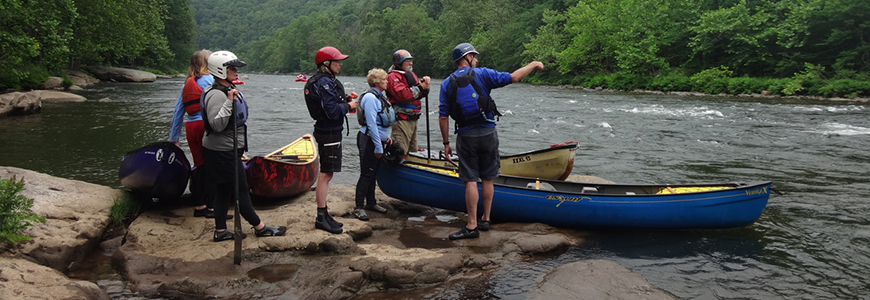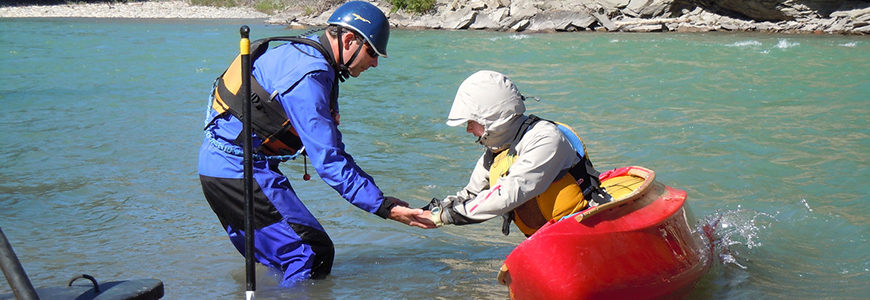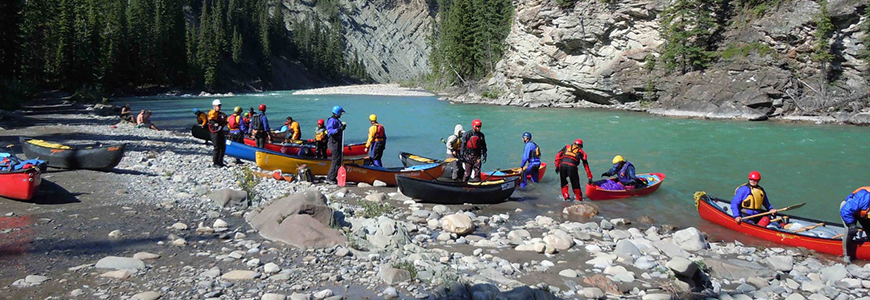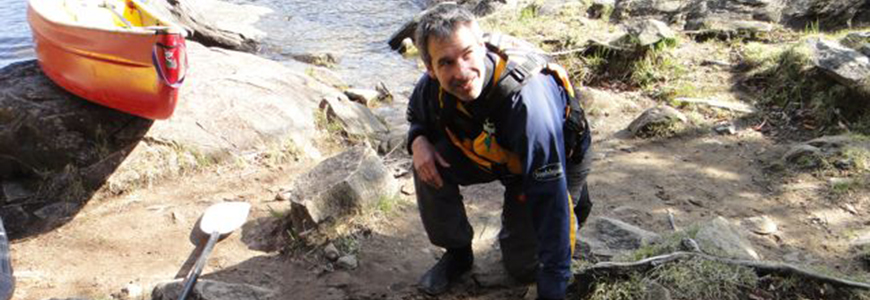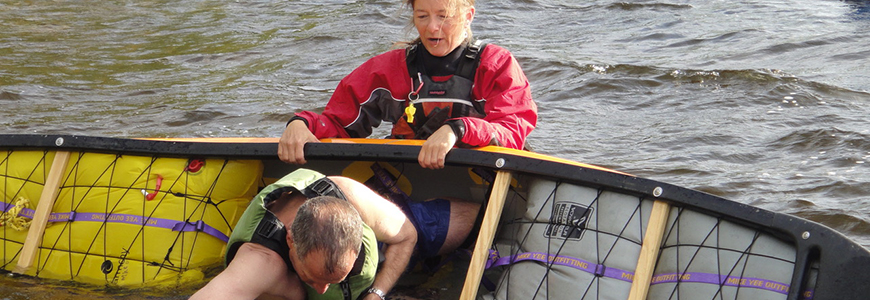In white water, maintaining momentum is essential for catching must make eddies. When crossing the grain, say during a ferry, using bow control stokes will drive your canoe across currents and preserve precious momentum. If you’re gliding downstream and planning on eddying out, the river’s provides momentum to counter the friction of steering from the stern. Choosing to steer form the bow or stern will be determined by where you are travelling and the whether you are moving with, or across, the current.
Use Bow Control for Crossing the Grain
Steering from the bow, called Power Steering, relies on adapting your forward and cross-forward stroke so they control your boat angle. The advantage of Power Steering is that your paddle strokes always add to your momentum. The efficiency of using forward strokes means that you don’t wind up fighting the drag caused by friction strokes like stern prys and rudders.
Picture yourself planning and “S” turn across some pretty fast water. Your move begins with your canoe facing upstream and travelling against, then progressively across, the current. Any drag from stern strokes will slow your momentum and possible blow the move. Power Steering, with control coming from the bow, is your best method of building the needed momentum.
Use Stern Control for Going with the Flow
Stern strokes, like prys, rudders and draws, are the traditional steering strokes used by all canoeists. Their strong suite is that they work incredibly well for steering. Anytime you need to turn you canoe in a hurry, the leverage created by these strokes is practically guaranteed to work every time. The down side of these friction strokes is they all slow you down – some more than others. Be warned; use stern control when you have enough momentum to counter the drag of the stroke.
So, when’s the best time to use stern control? Anytime momentum is not a concern for making the move. Imagine you’re cruising down a drop and want to eddy out at the bottom. You’re carrying loads of downstream momentum and facing a whooping 180 degree turn coming at you, fast! The only thing that’s going to make that eddy turn happen is a stern control stroke. Heck, friction is not an issue, your going downhill building momentum as you approach the turn.
Making the Move Every Time
Making your move every time will depend on matching your paddling technique to how you plan on using the current. Your strategy has to account for the momentum gained or lost from both stokes and the river current. Think of bow control as having less friction and higher efficiency, while stern control gives you leverage and security at the cost of friction.


